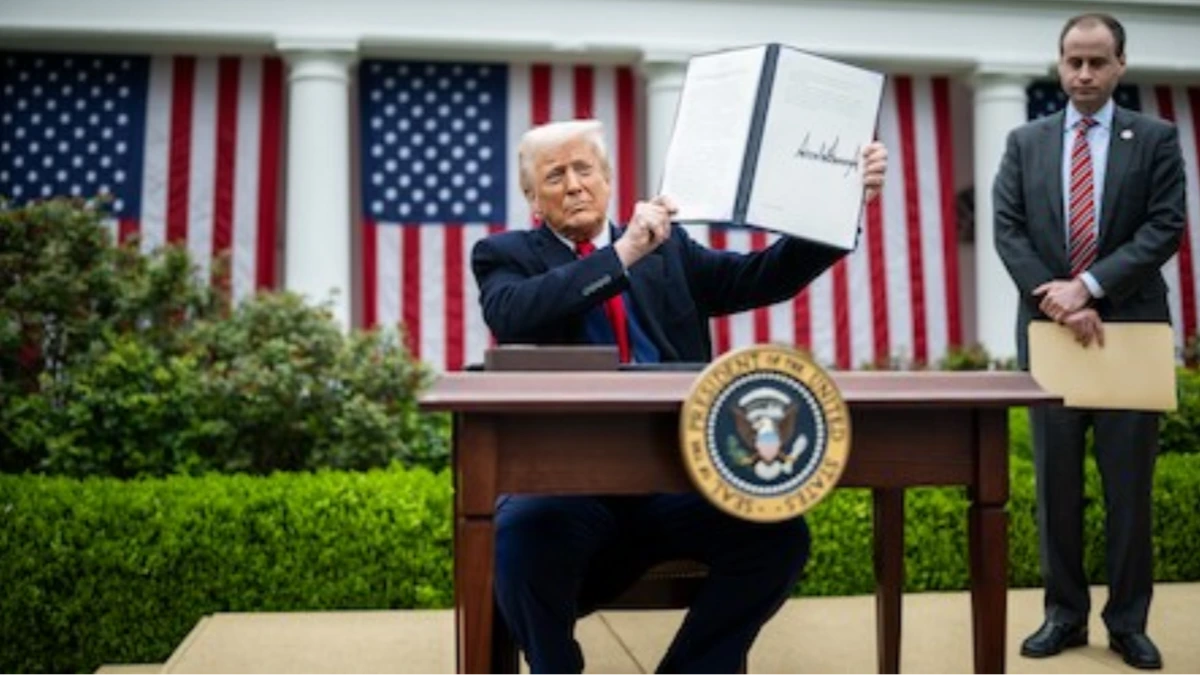WASHINGTON — The US Supreme Court’s decision not to immediately block former President Donald Trump’s sweeping tariffs has left American manufacturers, trade partners, and economists preparing for a prolonged period of uncertainty in global commerce.
For companies like OTC Industrial Technologies, which supplies factory equipment across the Midwest, the ruling underscores how deeply entrenched Trump’s tariffs have become in the fabric of US trade.
We moved things out of China and went to some of those other countries, and now the tariffs on those are as bad or worse, said Bill Canady, the company’s chief executive. “We just have to hang on and navigate our way through this so we don’t all go broke in the short run.”
The Court, with its 6-3 conservative majority, has opted not to intervene before hearing arguments on whether Trump overstepped his authority under the 1977 International Emergency Economic Powers Act (IEEPA). That delay means the tariffs remain in place for now.
Trump’s tariffs, initially imposed during his presidency and reactivated through executive authority, target imports from multiple trade partners, including China, India, Brazil, and several European nations.
The policy aims to penalize nations engaged in what the former president calls “unfair trade practices” and to bolster domestic manufacturing.
Lower courts have ruled that Trump exceeded his authority by using IEEPA a law designed for national security emergencies to impose broad trade restrictions. The administration argues that such measures are justified under economic emergency powers.
This is not about one man’s policy preference,” said trade lawyer Daniel Horowitz of Washington based Global Trade Group.
It’s about defining the limits of presidential power in economic governance. If the Court upholds Trump’s authority, it effectively grants the White House a standing tool to reshape global trade without congressional consent.”
If upheld, the ruling could set a precedent allowing future presidents to invoke emergency powers to impose tariffs or sanctions on a wider range of nations even in the absence of a clear national security threat.
Economists and policy analysts are divided on whether Trump’s tariffs ultimately help or harm the US economy.
Tariffs can protect certain industries temporarily, but they also drive up costs for manufacturers and consumers, said Dr. Ellen Park, senior fellow at the Peterson Institute for International Economics.
The current policy has created ripple effects across supply chains that were already fragile after the pandemic.
Supporters argue that tariffs are a necessary defense mechanism in an increasingly competitive global landscape.
“For too long, we have allowed foreign countries to exploit our markets,” said Michael Reeve, a former U.S. trade official now with the American Manufacturing Council.
These tariffs are forcing companies to rethink supply chains and bring production closer to home.
Still, the unpredictability surrounding tariff enforcement has made long term planning difficult for many industries. Equipment makers, auto suppliers, and chemical producers report rising input costs and delays in sourcing critical components.
Since 2018, when the first wave of Trump era tariffs was introduced, US imports from China have fallen by roughly 25%, according to Commerce Department data.
Meanwhile, imports from India and Vietnam initially surged but have now slowed as tariffs expanded to include a broader set of nations.
A recent analysis by the Brookings Institution found that U.S. manufacturers paid an additional $48 billion in duties in 2024 alone due to the expanded tariff regime.
Consumer prices for affected goods, including industrial equipment, machinery, and certain electronics, have risen between 5% and 15% over the same period.
Global partners have also begun retaliating. India, Brazil, and the European Union have implemented countermeasures targeting U.S. exports of agricultural and industrial goods, further tightening trade flows.
At a metal fabrication plant in Cleveland, operations manager Steve McAllister said his company is struggling to adjust. “We’ve switched suppliers three times in two years,” he said.
The tariffs make every new sourcing plan a gamble. Our customers don’t want to pay more, but we can’t absorb the costs forever.
In Houston, small business owner Priya Mehta, who imports machine components from India, described a similar challenge.
“We thought moving away from China would shield us, but now it’s the same story all over again,” Mehta said. “You can’t plan ahead when trade policy changes with every headline.”
Foreign officials have voiced concern that prolonged tariffs could erode global confidence in US trade reliability.
“Businesses need predictability,” said Rajiv Sood, a senior adviser at India’s Ministry of Commerce. “Tariffs as a tool of diplomacy create volatility that hurts both sides.”
Legal experts expect the Supreme Court to hear full arguments later this year, with a decision likely in early 2026. Until then, the tariffs will remain in effect, continuing to influence global trade flows and corporate strategy.
If the Court sides with the administration, it could cement a broader interpretation of executive power in economic policymaking.
Conversely, a ruling against Trump could limit future presidents from invoking emergency powers for trade purposes a shift that may recalibrate US economic diplomacy for decades.
“This is not just about tariffs,” said Horowitz. “It’s about whether the presidency can unilaterally define what constitutes an economic emergency. The implications reach far beyond trade.”
As the legal debate unfolds, companies across the United States are adapting to a new normal in global trade one defined by tariffs, uncertainty, and shifting alliances.
For now, industry leaders like Canady say they can only endure the turbulence. “We’ve survived supply chain shocks before,” he said. “But this time, it feels like the rules of global trade are being rewritten in real time.”

